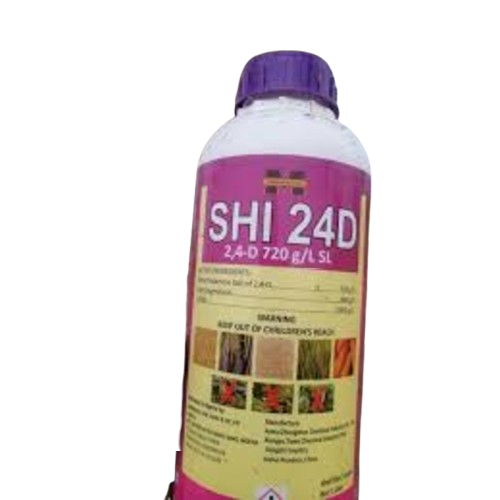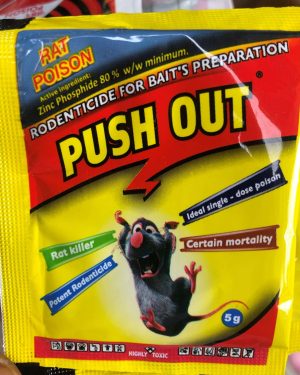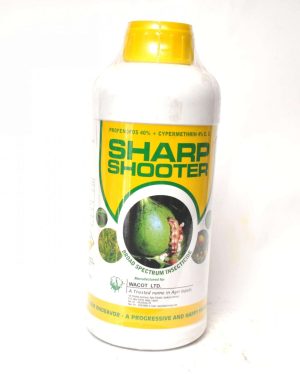Description
SHI 24D Herbicide | 1L contains a soluble liquid concentrate (SL) formulation of the herbicide 2,4-D, standardized to deliver 720 grams of the active ingredient per litre of product. This high concentration reduces packaging and transport costs but requires careful measurement and dilution according to label rates.
Key Characteristics of SHI 24D Herbicide | 1L:
-
Active Ingredient (AI): 2,4-Dichlorophenoxyacetic acid (2,4-D) (720 grams per litre). This is a very high-concentration formulation.
-
Formulation: SL (Soluble Liquid Concentrate) – Dissolves readily in water to form a true solution for spraying.
-
Chemical Group: Synthetic Auxin Herbicide (Group O / HRAC Group 4). Mimics natural plant growth hormones (auxins).
-
Mode of Action:
-
Systemic – Absorbed by leaves and roots, translocated throughout the plant.
-
Disrupts normal cell growth and division in susceptible plants, causing uncontrolled, abnormal growth (epinasty – twisting, curling), stem cracking, tissue death.
-
-
Spectrum: Selective, Broadleaf Weed Control. Primarily effective against annual and perennial broadleaf (dicot) weeds. Generally safe on established grasses (cereals, corn, turfgrass, pastures) and certain tolerant broadleaf crops when applied correctly.
-
Speed of Action: Relatively slow-acting. Visible symptoms (twisting, curling, cupping of leaves) appear within 1-7 days. Complete kill may take 2-4 weeks, depending on weed size, species, and conditions.
-
Residual Activity: Low to Moderate soil persistence. Breakdown depends on soil type, moisture, and temperature. Can affect susceptible crops planted soon after application.
-
Volatility & Drift Risk: HIGH. A major concern with 2,4-D, especially ester formulations. This SL formulation is likely an amine salt (often indicated by “DMA” or “IPA” on labels), which is less volatile than ester forms but STILL poses significant drift risk. Temperature inversions, wind, and sprayer setup dramatically increase off-target movement potential.
-
Resistance: Some broadleaf weed populations have developed resistance, though less widespread than with other modes of action. Important for resistance management rotations.
Primary Applications:
-
Cereals (Wheat, Barley, Oats, Rye): Post-emergence control of broadleaf weeds. Timing is critical (specific crop growth stages).
-
Corn (Maize): Post-emergence control of broadleaf weeds. Selectivity depends on corn variety and growth stage. Often used pre-plant or pre-emergence as well.
-
Turfgrass: Control of broadleaf weeds (dandelions, clover, plantain, etc.) in lawns, golf courses, sports fields.
-
Pastures & Rangeland: Control of brush and broadleaf weeds.
-
Sugarcane: Pre- and post-emergence control of broadleaf weeds.
-
Fallow & Stubble Management: Controlling emerged broadleaf weeds.
-
Non-Crop Areas: Control of broadleaf weeds and brush on roadsides, fence lines, industrial sites (often using higher rates).
Application Considerations:
-
Drift is the #1 Concern: EXTREME CAUTION REQUIRED.
-
NEVER spray during temperature inversions (common early morning, evening, calm nights).
-
Avoid spraying when wind speeds are above recommended levels on the label (often < 10-15 km/h).
-
Use Coarse spray droplets (larger droplets are less prone to drift).
-
Use Low Spray Pressure.
-
Use Drift Reduction Nozzles (DRN) or air induction nozzles.
-
Maintain adequate boom height.
-
Use buffer zones near sensitive crops (vegetables, grapes, ornamentals, cotton, soybeans, tomatoes, etc.), water bodies, and property boundaries. Sensitive crops can be damaged by VERY low concentrations.
-
-
Crop Selectivity & Timing: CRITICAL. Applying outside the recommended crop growth stage window can cause severe crop injury. Sensitivity varies greatly between grass crops.
-
Weed Size: Most effective on small, actively growing seedlings. Control diminishes significantly on large, mature, or stressed weeds.
-
Environmental Conditions: Optimal activity occurs during warm, humid conditions with adequate soil moisture. Avoid application during drought stress or extreme temperatures.
-
Tank Mixing: Commonly mixed with other herbicides (e.g., atrazine, dicamba, glyphosate, ALS inhibitors for grasses) for broader spectrum control. Check label for compatibility and approved mixes. NEVER mix with incompatible products (e.g., some liquid fertilizers).
-
Adjuvants: May or may not require adjuvants depending on the specific formulation and target weeds. Check the product label. Surfactants can sometimes increase efficacy but also potentially increase drift risk or crop sensitivity.
-
Soil Residual & Rotation: Check the label for plant-back restrictions for susceptible rotational crops (e.g., legumes, vegetables).
Additional information
| Weight | 6 kg |
|---|








Reviews
There are no reviews yet